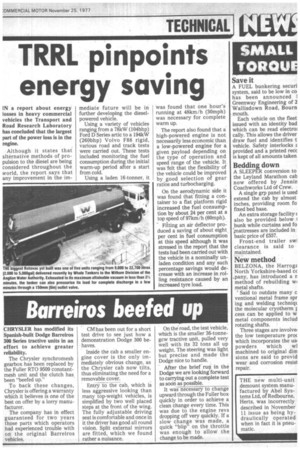energy saving
Page 27

If you've noticed an error in this article please click here to report it so we can fix it.
[N a report about energy losses in heavy commercial vehicles the Transport and Road Research Laboratory has concluded that the largest part of the power loss is in the engine.
Althoughit states that alternative methods of propulsion to the diesel are being considered throughout the world, the report says that any improvement in the im mediate future will be in further developing the dieselpowered vehicle.
Using a variety of vehicles ranging from a 78kW (104bhp) Ford D Series artic to a 194kW (260bhp) Volvo F88 rigid, various road and track tests were carried out. These tests included monitoring the fuel consumption during the initial warm-up period after a start from cold.
Using a laden 16-tonner, it was found that one hour's running at 48km/h (30mph) was necessary for complete warm up.
The report also found that a high-powered engine is not necessarily less economic than a low-powered engine for a given payload depending on the type of operation and speed range of the vehicle. It was 'felt that the flexibility of the vehicle could be improved by good selection of gear ratios and turbocharging.
On the aerodynamic side it was found that fitting a container to a flat platform rigid increased the fuel consumption by about 24 per cent at a top speed of 97km/h (60mph).
Fitting an air deflector produced a saving of about eight per cent in 'fuel consumption at this speed although it was stressed in the report that the tests had been carried out with the vehicle in a nominally unladen condition and any such percentage savings would decrease with an increase in rolling resistance caused by an increased tyre load.










































































































